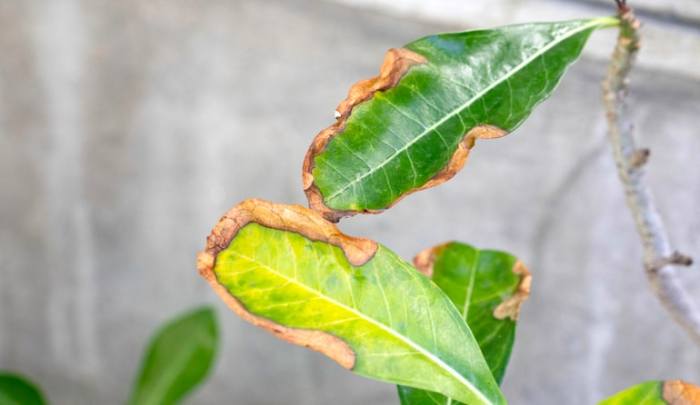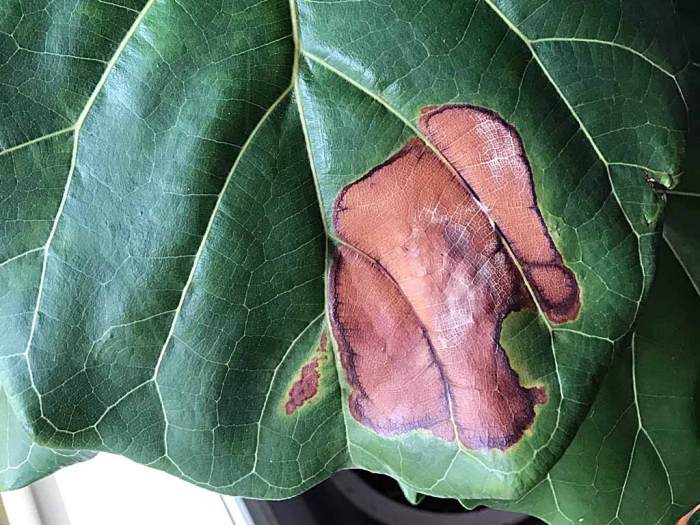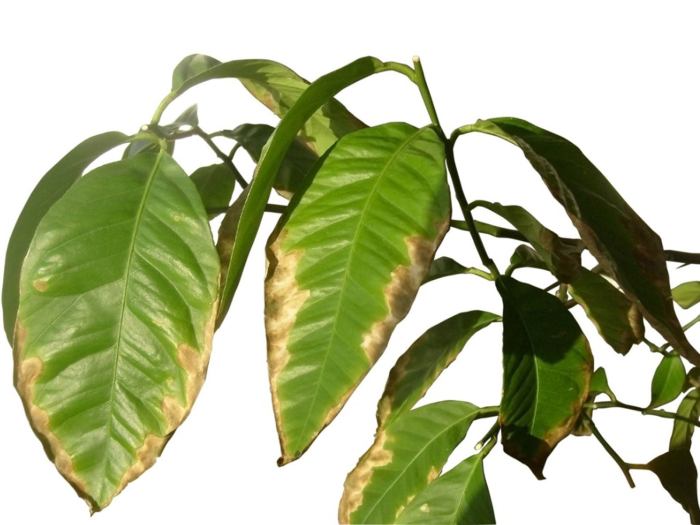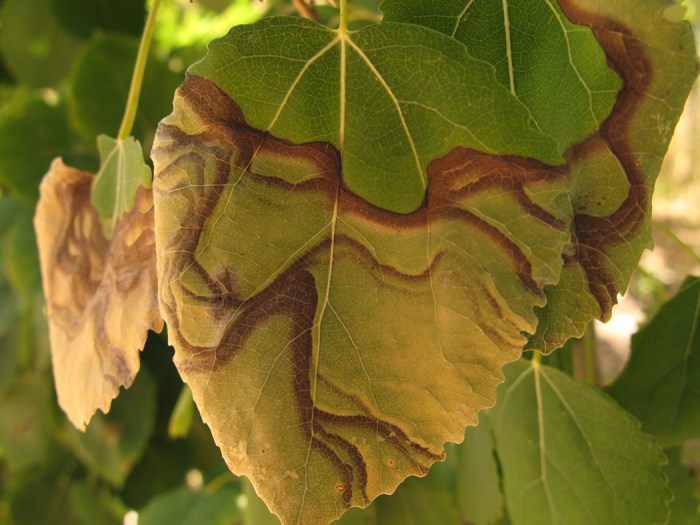What is leaf scorch and how to avoid it? This question plagues many gardeners, as they witness their beloved plants succumb to this distressing condition. Leaf scorch, a common plant ailment, manifests as browning and drying of leaf edges and tips, often resembling a burn.
While it may seem like a simple scorching from the sun, leaf scorch has deeper roots, stemming from a combination of environmental factors and improper care. Understanding the causes and recognizing the symptoms of leaf scorch is crucial for preventing and treating this detrimental condition.
Leaf scorch is a complex issue that can be caused by a variety of factors, including drought, overwatering, and nutrient deficiencies. In this comprehensive guide, we will delve into the intricate world of leaf scorch, unraveling its causes, symptoms, and effective solutions.
We will explore how environmental factors, watering techniques, and soil health contribute to this plant malady. Additionally, we will provide practical tips for identifying leaf scorch, implementing preventative measures, and treating affected plants.
What is Leaf Scorch?

Leaf scorch is a common plant disease that can affect a variety of trees and shrubs. It is not caused by a pathogen, but rather by environmental factors that disrupt the plant’s ability to transport water. This can lead to the browning and drying of leaves, starting at the tips and margins and progressing inward.
Symptoms of Leaf Scorch
Leaf scorch can manifest in various ways, depending on the plant species and the severity of the condition. Here are some common symptoms:
- Browning of leaf tips and margins:This is often the first sign of leaf scorch, and it can appear on one or more branches.
- Leaf drop:As the condition progresses, leaves may start to drop prematurely.
- Wilting:The leaves may also appear wilted or droopy, even if the soil is moist.
- Reduced growth:The overall growth of the plant may be stunted, and new growth may be sparse or underdeveloped.
Plants Susceptible to Leaf Scorch
Leaf scorch can affect a wide range of plants, but some are more susceptible than others. Here are a few examples:
- Oak trees:Oak trees are particularly prone to leaf scorch, especially in hot, dry climates.
- Maple trees:Maple trees are also susceptible, especially those growing in urban areas with compacted soil.
- Redbuds:Redbuds are a popular ornamental tree, but they are often affected by leaf scorch.
- Lilacs:Lilacs are another common shrub that can be affected by leaf scorch.
Causes of Leaf Scorch: What Is Leaf Scorch And How To Avoid It

Leaf scorch is a condition that affects trees and shrubs, causing browning and drying of the leaf margins and tips. This condition can be caused by a variety of factors, including environmental stressors and improper care practices.
Environmental Factors
Environmental factors play a significant role in the development of leaf scorch. These factors can directly impact the tree’s ability to absorb water and nutrients, leading to dehydration and scorching.
- Drought: Prolonged periods of dry weather can lead to insufficient water uptake, resulting in leaf scorch. The tree’s roots may struggle to absorb enough water to meet the demands of the leaves, especially during hot, dry conditions.
- High Temperatures: Extreme heat can increase the rate of transpiration, the process by which plants lose water through their leaves. If the soil is unable to provide enough water to compensate for the increased transpiration, leaf scorch can occur.
- Wind: Strong winds can dry out the soil and increase the rate of transpiration, contributing to leaf scorch.
- Soil Compaction: Compacted soil restricts root growth and water infiltration, making it difficult for trees to access water and nutrients. This can lead to dehydration and leaf scorch.
Improper Watering Techniques
Inadequate watering practices can exacerbate the effects of environmental stressors and increase the risk of leaf scorch.
- Insufficient Watering: Underwatering is a common cause of leaf scorch. Trees need consistent watering, especially during periods of drought. The frequency and amount of water required will vary depending on the tree species, soil type, and weather conditions.
- Erratic Watering: Inconsistent watering can be just as detrimental as under-watering. Alternating between periods of deep watering and allowing the soil to dry out completely can stress the tree’s root system and make it more susceptible to leaf scorch.
- Shallow Watering: Watering only the surface of the soil does not allow the water to reach the tree’s deeper roots, leading to dehydration and leaf scorch.
Recognizing Leaf Scorch

Leaf scorch is a common plant problem that can affect a variety of trees and shrubs. It is characterized by browning and drying of the leaves, often starting at the tips and margins. The leaves may also become brittle and fall off prematurely.
While leaf scorch can be caused by several factors, it is most commonly associated with drought stress. This occurs when the plant cannot absorb enough water to meet its needs, leading to dehydration and damage to the leaves.
Identifying Leaf Scorch
Leaf scorch symptoms can vary depending on the plant species and the severity of the problem. However, some common signs include:
| Symptom | Cause | Solution |
|---|---|---|
| Browning or drying of leaves, starting at the tips and margins | Drought stress, root damage, poor drainage | Provide adequate watering, improve drainage, and protect roots from damage |
| Leaves becoming brittle and falling off prematurely | Dehydration, lack of nutrients | Water regularly, fertilize as needed |
| Leaf veins remaining green while the tissue between them browns | Water stress, root damage | Water deeply and infrequently, avoid damaging roots |
| Wilting of leaves during the day, but recovering at night | Drought stress | Water deeply in the morning to allow the plant to absorb water throughout the day |
Example:A large oak tree in a homeowner’s yard exhibits browning of the leaves from the tips and margins, with the veins remaining green. The leaves are also brittle and fall off prematurely. The homeowner has noticed that the tree has been wilting during the day, but recovers at night.
These symptoms suggest that the oak tree is experiencing leaf scorch due to drought stress.
Example Image:The image shows a maple tree with leaf scorch. The leaves are browning from the tips and margins, with the veins remaining green. This is a common symptom of leaf scorch caused by drought stress.
Leaf scorch is a common problem that affects many trees and shrubs, particularly those that are stressed by drought or poor drainage. To avoid leaf scorch, it’s important to provide your plants with adequate water, especially during hot, dry periods.
You can also help prevent leaf scorch by ensuring your trees and shrubs are planted in well-drained soil and by mulching around their bases to help retain moisture. If you’re concerned about leaf scorch in your backyard , consult with a local arborist or gardening expert for personalized advice on how to best care for your plants.
Distinguishing Leaf Scorch from Other Diseases
Leaf scorch can sometimes be confused with other plant diseases, such as fungal leaf spot or bacterial blight. However, there are some key differences that can help you distinguish leaf scorch:
- Leaf scorch typically affects the entire leaf, starting at the tips and margins, while fungal leaf spot or bacterial blight often causes more localized spots or lesions.
- Leaf scorch is often associated with drought stress, while fungal leaf spot or bacterial blight are caused by pathogens.
- Leaf scorch symptoms are often more severe on the sunny side of the plant, while fungal leaf spot or bacterial blight can affect the entire plant.
Prevention and Treatment

Preventing leaf scorch involves understanding its causes and implementing strategies to mitigate these factors. Effective prevention is crucial, as treating established leaf scorch can be challenging and may not fully restore the plant’s health.
Preventing Leaf Scorch
Preventing leaf scorch requires a proactive approach that addresses the key factors contributing to its development. The following preventive measures can significantly reduce the risk of leaf scorch in your trees and shrubs:
- Proper Watering:Consistent and adequate watering is paramount in preventing leaf scorch. Deep, infrequent watering encourages deep root development, allowing trees and shrubs to access water reserves during periods of drought.
- Mulching:Applying a layer of organic mulch around the base of trees and shrubs helps retain soil moisture, suppress weed growth, and regulate soil temperature. A 2-4 inch layer of mulch can significantly reduce water loss through evaporation.
- Selecting Drought-Tolerant Species:When planting new trees or shrubs, consider choosing species known for their drought tolerance. These plants are naturally adapted to withstand dry conditions and are less susceptible to leaf scorch.
- Avoiding Over-Pruning:Excessive pruning can stress trees and shrubs, making them more vulnerable to leaf scorch. Prune sparingly and avoid removing large branches, especially during the growing season.
- Protecting Tree Trunks:Damage to the bark of tree trunks can disrupt water flow, increasing the risk of leaf scorch. Protect tree trunks from lawnmowers, weed trimmers, and other potential injuries.
Watering Techniques to Prevent Leaf Scorch, What is leaf scorch and how to avoid it
Proper watering techniques are essential for preventing leaf scorch. Deep watering encourages deep root growth, allowing trees and shrubs to access water reserves during periods of drought.
- Deep Watering:Instead of frequent, shallow watering, focus on deep, infrequent watering. Water deeply enough to reach the root zone, typically 12-18 inches deep.
- Soaker Hoses:Soaker hoses are effective for delivering water directly to the root zone, minimizing water loss through evaporation.
- Drip Irrigation:Drip irrigation systems are highly efficient, delivering water directly to the roots and minimizing water waste.
- Watering in the Early Morning:Watering in the early morning hours allows water to penetrate the soil before it evaporates during the heat of the day.
Fertilizers and Soil Amendments
Proper fertilization and soil amendments can play a role in preventing leaf scorch.
- Balanced Fertilization:Use a balanced fertilizer with a ratio of nitrogen, phosphorus, and potassium that meets the specific needs of your trees and shrubs. Avoid excessive nitrogen application, as it can promote lush foliage growth that increases water demand.
- Soil Amendments:Incorporating organic matter, such as compost or manure, into the soil improves drainage, aeration, and water retention. This helps create a healthy soil environment that supports root growth and reduces the risk of leaf scorch.
- Soil Testing:Regular soil testing can identify nutrient deficiencies and imbalances that may contribute to leaf scorch. Based on the results, you can adjust fertilization practices to meet the specific needs of your trees and shrubs.
Common Leaf Scorch Scenarios

Leaf scorch can manifest in various ways depending on the underlying cause. Understanding these scenarios can help you identify the problem and take appropriate action.
Drought-Induced Leaf Scorch
Drought is a common cause of leaf scorch, especially in plants that are not well-established or have shallow root systems. When the soil dries out, the plant struggles to absorb enough water to meet its needs. This leads to dehydration, which manifests as leaf scorch.
- Symptoms:Brown, crispy leaf margins, particularly on the edges of leaves, with the rest of the leaf remaining green. The browning often progresses inward as the drought persists.
- Example:A newly planted oak tree in a dry, sunny location may experience leaf scorch during a summer heatwave if its roots haven’t had time to establish themselves deeply in the soil.
Overwatering-Induced Leaf Scorch
Paradoxically, overwatering can also lead to leaf scorch. When soil is constantly saturated, it creates an environment where roots cannot access oxygen. This oxygen deprivation, known as root suffocation, can damage roots and hinder their ability to absorb water, ultimately causing leaf scorch.
- Symptoms:Leaf scorch symptoms may appear similar to those caused by drought, but the soil will be consistently wet. Additionally, wilting, yellowing leaves, and stunted growth may also be observed.
- Example:A potted hydrangea that is overwatered may exhibit leaf scorch, even though the soil is constantly moist. The plant’s roots are suffocating, unable to absorb water efficiently.
Combined Factor Leaf Scorch
In many cases, leaf scorch is not caused by a single factor but rather a combination of contributing elements. This complexity makes diagnosis and treatment more challenging.
- Example:A mature maple tree in a partially shaded location may experience leaf scorch due to a combination of factors, including drought stress during periods of hot, dry weather, compacted soil that hinders root growth, and root damage from nearby construction activities.
Final Summary

By understanding the intricacies of leaf scorch, you can equip yourself with the knowledge to prevent and treat this common plant ailment. By implementing the preventative measures and treatment strategies discussed, you can ensure the health and vitality of your plants.
Remember, early detection and prompt action are key to mitigating the effects of leaf scorch. With a proactive approach, you can safeguard your garden and enjoy the beauty of healthy, thriving plants.